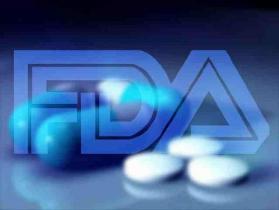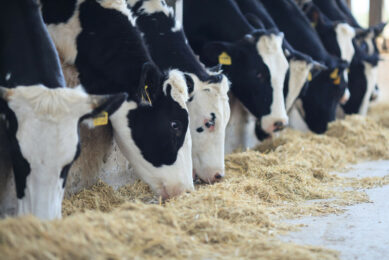FDA report: Only partial insight in antibiotics use

The US Food & Drug Administration recently released a report estimating the amount of antibiotics used in food-producing animals in 2009 at approximately 13 million kg. Not all of the products conflict with human medicine.
Past estimates have put the number between 8 and 11 million kg, but no official data had been released by the government until this year’s report.
Antimicrobial drugs approved for use in food-producing animals:
2009 Sales and Distribution | Annual Totals (kg active ingredient) | |
US | Aminoglycosides | 339,678 |
Cephalosporins | 41,328 | |
Ionophores | 3,740,627 | |
Lincosamides | 115,837 | |
Macrolides | 861,985 | |
Penicillins | 610,514 | |
Sulfas | 517,873 | |
Tetracyclines | 4,611,892 | |
NIR1 | 2,227,366 | |
Export | Tetracyclines | 515,819 |
NIRE2 | 1,115,728 | |
1 NIR = Not Independently Reported. Antimicrobial classes for which there were less than three distinct sponsors actively marketing products domestically were not independently reported. These classes include: Aminocoumarins, Amphenicols, Diaminopyrimidines, Fluroquinolones, Glycolipids, Pleuromutilins, Polypeptides, Quinoxalines, and Streptogramins.
2 NIRE = Not Independently Reported Export. Antimicrobial Classes for which there were less than three distinct sponsors exporting products were not independently reported. These classes include: Aminocoumarins, Aminoglycosides, Amphenicols, Cephalosporins, Diaminopyrimidines, Fluroquinolones, Glycolipids, Ionophores, Lincosamides, Macrolides, Penicillins, Pleuromutilins, Polypeptides, Quinoxalines, Streptogramins and Sulfas.
Minimise use
US House Representative Louise Slaughter, a former public health microbiologist, commented on the report, and in favour of reducing the use of antibiotics in farm animals, saying:
“This report illustrates the overuse of antibiotics in food animal production and makes a strong case for some common-sense limits on antibiotic use. We are putting millions of pounds of antibiotics into the food supply unnecessarily every year. This cannot continue and it’s my hope that these new data from the FDA will encourage even more members of Congress to join me next year when I reintroduce this legislation. Moreover, the FDA must move fast to issue strong regulations on antibiotic usage in agriculture.”
Slaughter introduced the 2009 Prevention of Antibiotics for Medical Treatment Act (PAMTA) that would set regulations limiting antibiotic use in livestock.
FDA Guidelines
Earlier this year, the FDA released guidelines saying that antibiotics in meat pose a “serious public health threat” because of the contribution to creating antibiotic-resistant bacteria.
The agency recommended that producers refrain from drug use to speed growth and reduce feeding costs, and instead use them only when medically necessary.
Sold, but not used
The FDA report includes data on sales of all antibiotics intended for use in farm animals. Of the mentioned 13 million kg sold, nearly 29% of that amount was ionophores (mainly to fight coccidiosis in chicken), compounds not used in human medicine.
Several groups support legislation that would ban the use in livestock and poultry of antibiotics that prevent or control diseases and of ones that improve feed conversion and, thus, weight gain.
“Pork producers use antibiotics responsibly, under the direction of a veterinarian, to protect public health and the health of their animals and to produce safe food,” said Howard Hill, DVM, who serves on the board of directors for the National Pork Producers Council.
“The FDA report does not show that livestock producers overuse antibiotics, and it doesn’t show that they are being irresponsible. It simply shows that 13 million kg of antibiotics were sold in the United States.”
Lacking data
The FDA report, which was required under the 2008 Animal Drug User Fee Act, did not include data on the quantities of drugs used to treat sick animals, to prevent or control diseases and to improve feed efficiency and weight gain.
“Despite the fact that the FDA report lacks the data,” Dr Hill said, “several groups continue to peddle junk science on the percentage of antibiotics used for ‘non-therapeutic’ reasons, which include prevention and control of diseases, and to make comparisons of antibiotics used in food animals with those used in humans.”











